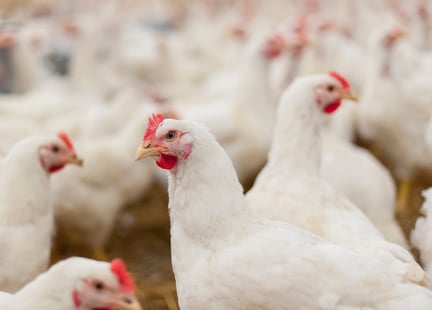While tackling the issue will take a concerted effort from companies and organisations working across the sector, there are ways businesses can help to protect their customers and reputation from unnecessary harm.
Food fraud is a growing concern. Recent incidents have increased the need to protect consumers by strengthening the seafood industry’s ability to detect and combat fraud across supply chains
2013’s horse meat scandal, where horse DNA was found in processed beef products across Europe, may go down as a watershed moment in the battle against food fraud for the red meat supply chain, but its undoubted impact on the wider industry has done little to quell uncertainties over provenance in the seafood sector.
Warnings about adulteration and replacement in the seafood supply chain have been present for several years, often with hard data from DNA analysis to back up industry concerns. One of the most famous tests in recent years was carried out by NGO Oceana who conducted 280 DNA tests on fish at restaurants located across the Belgian capital of Brussels. The results were startling, with one fish dish in every three mislabeled. The issues weren’t restricted to any individual species either. For example, hake was regularly found to be saithe and only 5% of bluefin tuna dishes were genuine, with the likes of swordfish being used as a substitute.
Advances in technology-centric data services, like DNA1 Consumer Assurance from LRQA, uses DNA test-based services from product authentication through to being assured as non-GMO. This means that new levels of assurance from services like these can drive consumer trust in brands, whilst reducing the risk of costly recalls for manufacturers.
Fish fraud isn’t restricted to speciation issues with white fish either. Another study by Oceana in the US revealed that of 82 samples of salmon taken from retailers and restaurants over 40% had been mislabeled. Their DNA testing concluded that of the mislabeled fish, over two thirds were being sold as wild when they were in fact, farmed. Similarly, alarming figures were uncovered by UCLA researchers who found that almost 50% of the sushi restaurants they tested over a four-year period had mislabeled fish, with some species incorrectly identified at every serving.
While most consumers will be primarily concerned that they could be paying top price for inferior or cheaper fish, there is also a very real public health risk. For example, many fish with high mercury levels are being passed off as low-mercury level fish and there have been instances of the highly toxic pufferfish being used as a substitute for monkfish.
These developments are leading to increased concerns from manufacturers, retailers and hospitality providers over the security and reliability of their supply chain. With consumer interest and demand for genuinely sustainably caught fish growing rapidly, the threat from fraud represents a very real reputational risk to all those involved in the seafood industry.
While tackling the issue will take a concerted effort from companies and organisations working across the sector, there are ways businesses can help to protect their customers and reputation from unnecessary harm.
Simple steps like buying certified fish can give you strong assurances about provenance and product quality. Within the fisheries sector the Marine Stewardship Council Sustainable Fish (MSC) label is the most highly regarded seal of quality and sustainability and has a transparent chain of custody which traces certified fish from sea to fork.
Businesses with deeper concerns may want to look at using a 3rd party specialist for a spot check inspection of their supplier’s sites. These can usually give you a good overview of the business you are buying from, while also providing an opportunity for identified issues to be addressed.
With fish growing in importance as a global food source the risks that some suppliers will look to pass off easier to source catches as something they’re not will likely increase. This at a time of high levels of consumer scrutiny means that failure to protect your supply chain could lead to irreparable levels of reputational damage.
Stakeholders and consumer confidence
Fighting food fraud is not a competitive issue. It is in the interest of all stakeholders around the world and across the food supply chain to work together to ensure that consumers are confident that the seafood they eat is safe and has been produced in a sustainable manner.
When considering whether a robust, yet flexible mechanism exists for the purposes of checking for known threats such as food fraud, we should look inwards at the progress that has been made to date within the food sector.
The globalisation of supply chains and the need for transparency and traceability have triggered changes in the way in which food safety is approached and the industry needs to start thinking about food fraud in the same way.
With organisations such as the GFSI amongst many putting the spotlight on food fraud, a process-based management system approach to food safety has the flexibility to assess this growing threat to the food industry and consumers alike.
While managing a global supply chain can seem daunting, LRQA’s longstanding expertise in the seafood sector and broad team of specialists will work in partnership with customers to offer simple and cost effective solutions - underpinned with data and technology - that are designed to reduce risk while safeguarding their customers, staff and brand.









